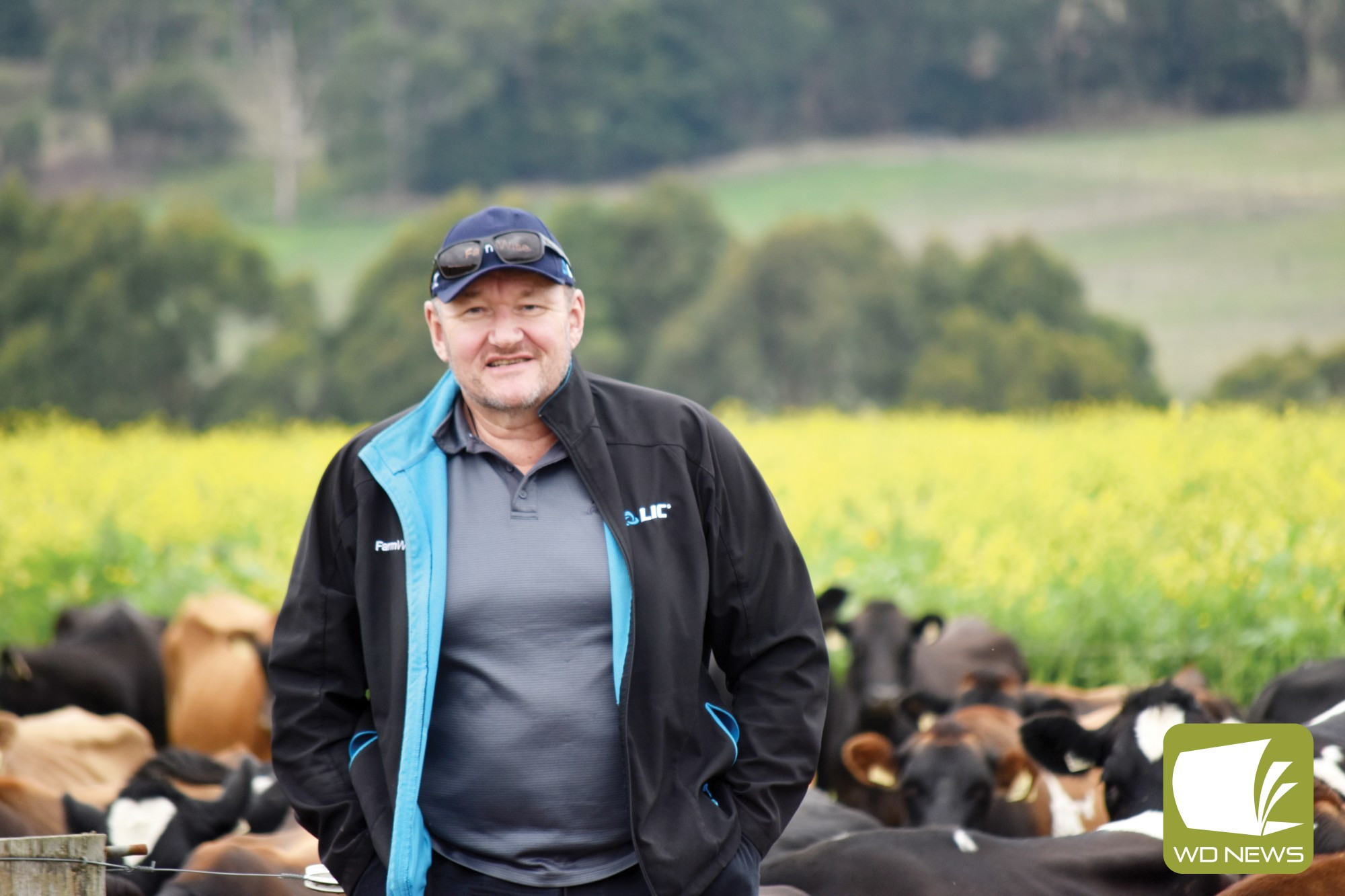General News
26 April, 2023
Expert predicts farming surge
VISITING New Zealand pasture-based flexible milking options expert Brent Boyce has predicted a surge of interest in different milking routines in Australia.

VISITING New Zealand pasture-based flexible milking options expert Brent Boyce has predicted a surge of interest in different milking routines in Australia.
FarmWise farm consultant Brent Boyce, who fostered and developed the concept of flexible milking options in his home country, has toured Australia this month and found growing interest in the concept.
Mr Boyce visited Terang earlier this month to host a forum on flexible milking options, and encouraged farmers to look at different options which could create lifestyle and profitability benefits.
“It’s a bit foreign for some farmers in Australia but there’s a lot of surprise about what is possible,” he said.
“It means you can have a sleep-in on a dairy farm – that’s something unheard of for centuries.”
Less than 40 per cent of New Zealand farmers milk twice a day all year and Mr Boyce encouraged Australian farmers to at least look at the options.
“It’s coming,” he said.
“There’s a tsunami of interest because people can see they can make a difference in their lives and businesses.
“We live in a volatile climate and we have to be flexible in how we approach businesses.
“I don’t tell a farmer what to do but I make a lot of suggestions.”
Mr Boyce said farmers who have a robust pasture-based dairy system won’t lose production if they follow some simple ways of changing but they stand to make more money, improve their mental health, gain significant lifestyle benefits and get happier and healthier cows.
“People ask if they will lose production, when I answer that you’ll make more profit it probably answers the question for them,” he said.
FarmWise is a consultancy business within Livestock Improvement Corporation (LIC) and Mr Boyce’s Australian tour was supported by the DemoDAIRY Foundation.
Mr Boyce has 28 years of experience as a dairy farm consultant, including being named New Zealand’s farm consultant of the year in 2016.
Mr Boyce describes flexible milking as a “game changer”. He came up with the term ‘3-in-2’ in 2001, while working with a farmer who had reverted to 16-hour milkings.
“He was doing cups on at 5am, 9pm and 1pm the next day but it was too tough. He was getting smashed and the cows were struggling,” he said.
“I said to myself – does it have to be a true 16-hour milking – it could be a different split, so we did 5am, 7pm and 11am the next day which became a 14-16-18-hour split.
“More farmers thought it was a good idea from Christmas because the cows didn’t lose production because they’d already peaked.
“I called it 3-in-2 and that became internationally quite famous.”
The idea grew in popularity after Mr Boyce presented his ideas at a 2007 once-a-day milking conference.
“People were trying to work out how to do once-a-day. It was more of a curiosity but by the end of it they were saying something is going on here,” he said.
Fifteen per cent of Mr Boyce’s clients milk once a day.
“I’m a fan of all systems – every farm is different,” he said.
“We tried to find something that would work better for people and 3-in-2 did its job for many years.”
In 2016, as part of the farm consultant of the year award, Mr Boyce was asked to re-write the papers on 3-in-2, further expanding interest in flexibility.
“It’s an incredible change,” he said.
“It’s across every different system and every type of dairy farm.”
In 2018 at a FarmWise conference, senior LIC scientist Steve Davis spoke on udder health.
“This was the moment I realised we could do even more,” Mr Boyce said.
“Steve said it was possible to milk cows twice a day, twice a week and stimulate the udders enough and have similar production.
“The afternoon milkings rescue the udder tissue memory so it thinks it’s on twice a day.
“It fired me up. We had 14-a-week on twice a day, 7-a-week once a day or in the middle 3-in-2 was 10 and a half milkings a week. I had a lightbulb moment - could we do other formats such as 11-in-7 or 10-in-7 and fill in the gaps.”
Mr Boyce wrote a paper on 10-in-7 milking, with Monday, Wednesday and Friday like normal twice a day, the other days at 10am.
“This taps into sport for young people or for going out on Friday and Saturday nights,” he said.
“The issue we have as an industry is we’re a 24-7 business in a weekend-based society.
“Dairy farming is a tough way to make a living and we need to become weekend centric.
“This way we have a life.”
Mr Boyce said 10-in-7 “has gone crazy” and gained global traction, and he believes any farm could easily make the adjustment by adopting a 48-hour feeding system.
“It’s all about the genetics – not the genetics of the cows, the genetics of the people,” he said.
“The cows are way more flexible than we are so we have to adjust ourselves. You can choose any milking regime.”